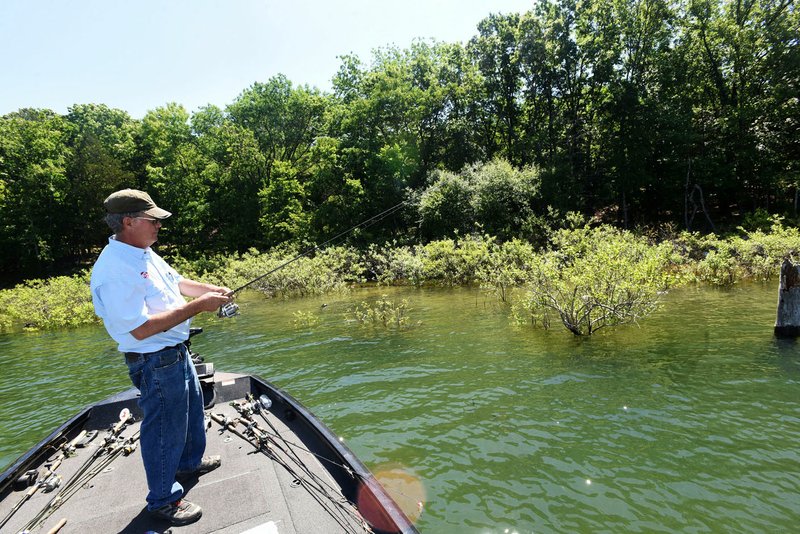A bank-full Beaver Lake puts a grin on the faces of anglers. They know that all this water should bring good fishing in years to come.
High water creates excellent spring spawning conditions for black bass, crappie, walleye and nearly every game fish species. That's the word from Kevin Hopkins, fisheries biologist with the Arkansas Game and Fish Commission. He and biologist Jon Stein manage the fishery at Beaver and other Northwest Arkansas waterways.
"Any time you have high water in the spring, it's good for the spawn. It's a matter of how long the water stays high. The longer the better," he said.
All the flooded bushes, brush and other cover provide shelter for the newly hatched fish that are nearly microscopic in size. Another benefit is all the nutrients that wash into the water as the reservoir fills. That helps create plankton, Hopkins said. All those newborn fish eat plankton until they grow large enough to eat other food, mainly other fish.
Threadfin shad are the primary forage fish at Beaver. Black bass, crappie, striped bass, walleye, catfish and more all eat threadfin shad. Threadfin shad eat plankton, so a big plankton bloom benefits the shad.
"The more groceries, the better," Hopkins said.
Some anglers say the crappie fishing at Beaver Lake this spring is better than it's been in years. That's a direct result of past high-water years, Hopkins said.
Crappie hatched this spring should reach 10 inches long in about three years, he said. Crappie at Beaver must be 10 inches or longer to keep. The daily limit is 15 crappie.
Black bass born this spring will grow to around 15 inches long in three to four years, he added. At Beaver, largemouth and smallmouth bass must be 15 inches or longer to keep. The daily limit is six.
As far as fishing goes, "All of these White River lakes -- Beaver, Table Rock and Bull Shoals -- live and die by high water," Hopkins said.
When the water rises at Beaver, the lake typically stays high through mid-summer for a successful spawn. That's good news for anglers.
"I don't see it coming down much until mid-July," Hopkins said.
Sick eagle update
Here's an update on the sick bald eagle that was rescued in April from the Kings River shoreline and is now under Lynn Sciumbato's care at Morning Star Wildlife Rehabilitation near Gravette.
The eagle is now eating on its own "and really likes to eat fish," Sciumbato said. At first she had to tube feed the bird and keep it in a crate. Now the eagle is out of the crate and in the big flight cage at Morning Star, an enclosure large enough to allow birds to fly.
Only problem is, the eagle doesn't want to fly, she said. It prefers to stay on the ground, as it did when it was first seen on the Kings River. More tests are planned to find out why the eagle doesn't want to fly, "but we don't know what those tests will be," Sciumbato said.
An original blood test revealed the eagle does not have lead poisoning as she originally thought. Now she's back to square one trying to find out why the Kings River eagle doesn't want to fly.
She hopes that one day the eagle will fly, and it can be released.
Flip Putthoff can be reached at fputthoff@nwaonline.com.
Sports on 06/04/2019
